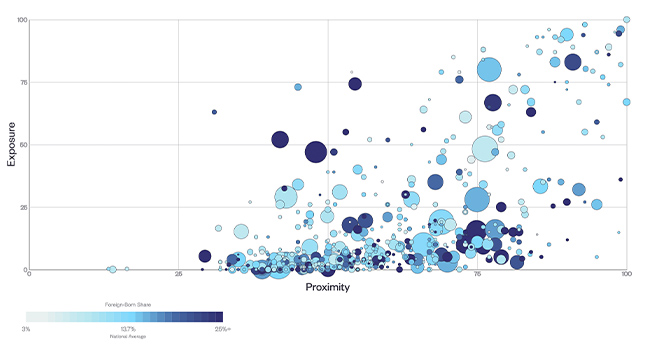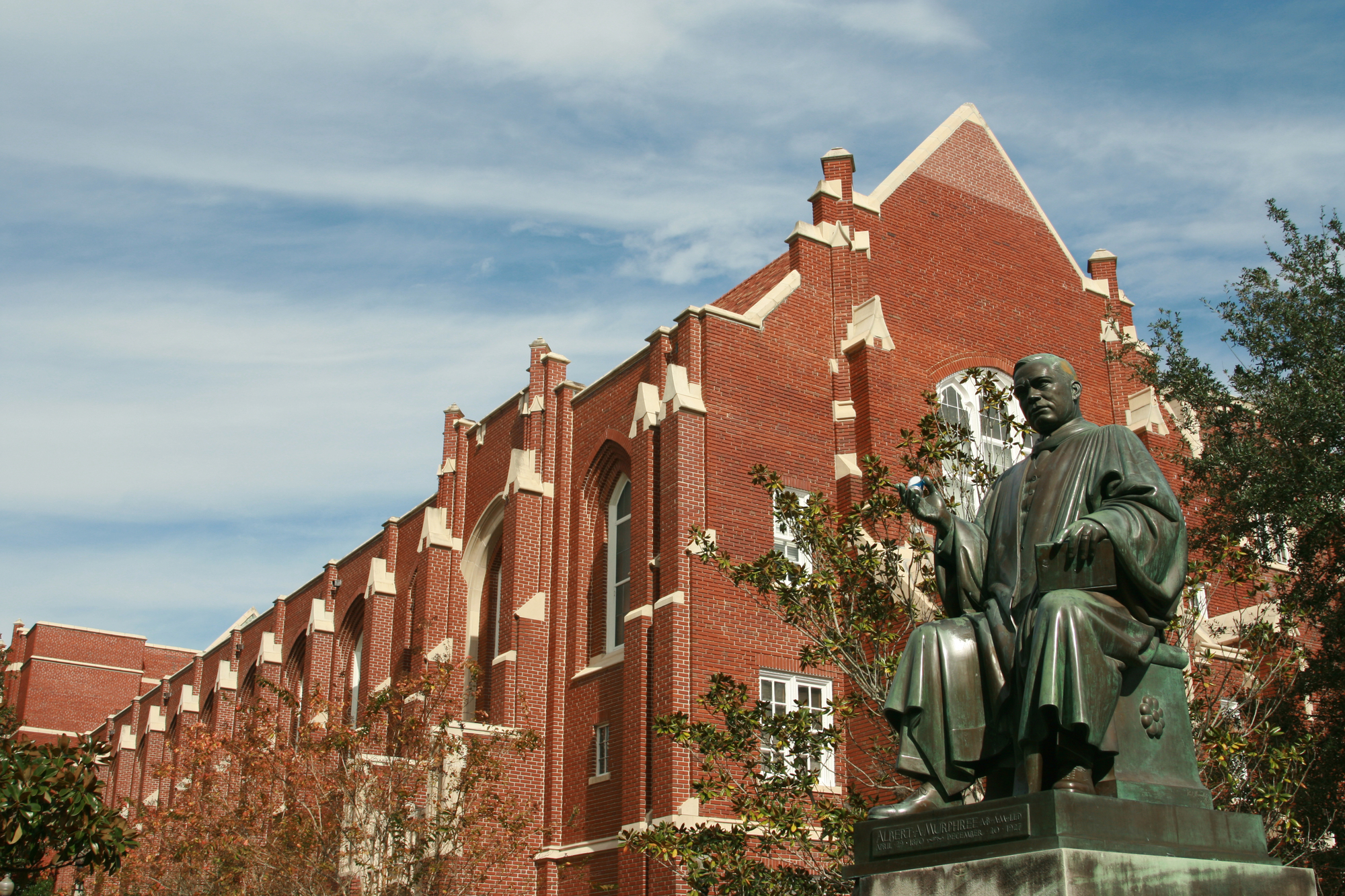Immigrants Working in Education During Covid-19 Crisis
Date: May 7, 2020

Due to the coronavirus outbreak, millions of students face severe challenges as they transition to remote learning. At every level, from daycare centers and preschools all the way up to colleges and universities, immigrants in the U.S. education sector play a significant role in supporting children and their families. Together, they help ensure America’s next generation receives the quality education they need during the Covid-19 crisis and beyond.
The latest data from the American Community Survey show that 2 million immigrants made up more than one in eight workers in the U.S. education sector in 2018. Nearly 60 percent of these immigrant workers held a bachelor’s degree or higher.
Figure 1: Immigrants in the Education Sector
| Number of Foreign-Born Workers | Share of All Workers, Foreign-Born | |
| Education Sector, Overall | 2,056,041 | 12.8% |
| Child Day care | 278,313 | 17.7% |
| K-12 | 898,365 | 9.8% |
| Colleges and Universities | 750,415 | 17.3% |
| Others Schools and Education Support Services | 128,948 | 14.0% |
In the 15 largest states by population, immigrants make up at least one out of every seven workers in education. In some states, that share is even higher. For example, in New York, California, and Florida, immigrants make up more than one in five workers in this sector.
Figure 2: Immigrant Workers in the Education Sector in the 15 Largest States
| State | Number of Foreign-Born Workers | Share of All Workers, Foreign-Born |
| New York | 242,521 | 20.0% |
| New Jersey | 98,841 | 19.6% |
| California | 393,391 | 22.4% |
| Michigan | 34,353 | 7.8% |
| Massachusetts | 74,919 | 16.3% |
| Florida | 168,876 | 20.7% |
| Illinois | 78,306 | 11.9% |
| Washington | 42,860 | 12.4% |
| Pennsylvania | 51,417 | 7.9% |
| Texas | 234,691 | 16.8% |
| Virginia | 66,431 | 14.4% |
| Georgia | 47,326 | 9.6% |
| Arizona | 40,767 | 13.0% |
| North Carolina | 37,333 | 7.7% |
| Ohio | 30,922 | 5.8% |
Nationwide, more than 278,000 immigrants make up 17.7 percent of all workers at childcare centers. These immigrant workers help take care of children of essential workers who fight on the frontlines. Many now also work with parents at home to continue nurturing children’s early development through online activities.
Figure 3: Immigrant Workers in Child Day Care
| Number of Foreign-Born Workers | Share of All Workers, Foreign-Born | |
| United States | 278,313 | 17.7% |
| New York | 46,810 | 37.0% |
| New Jersey | 15,484 | 33.9% |
| California | 62,401 | 37.2% |
| Florida | 23,275 | 28.3% |
| Illinois | 10,511 | 16.9% |
| Texas | 21,952 | 17.5% |
| Virginia | 11,513 | 25.7% |
From socially distant play to virtual storytime, childcare workers and teachers have quickly restructured their programs to ensure children’s safety and to help them adjust to the new learning environment. About one in five childcare workers and one in eight preschool teachers are immigrants.
Figure 4: Select Occupations in Child Day Care in the United States
| Occupation | Number of Immigrant Workers | Immigrants’ Share of Workforce |
| Childcare Workers | 157,776 | 21.7% |
| Preschool Teachers | 58,506 | 12.3% |
| Teaching Assistants | 21,324 | 19.7% |
As millions of students in the K-12 system struggle to cope with major disruptions at school and at home, immigrants, along with their U.S.-born colleagues, help provide the stability students need at a time of crisis. In primary and secondary education, nearly 900,000 immigrants make up almost one in 10 workers nationwide. In California alone, one in five workers in the K-12 system are immigrants.
Figure 5: Immigrant Workers in Primary and Secondary Education
| Number of Foreign-Born Workers | Share of All Workers, Foreign-Born | |
| United States | 898,365 | 9.8% |
| New York | 111,010 | 15.6% |
| New Jersey | 49,174 | 14.9% |
| California | 194,480 | 19.8% |
| Massachusetts | 20,677 | 9.4% |
| Florida | 84,675 | 17.4% |
| Illinois | 28,384 | 7.8% |
| Washington | 14,314 | 7.4% |
| Pennsylvania | 12,947 | 3.7% |
| Texas | 139,405 | 15.4% |
| Virginia | 28,127 | 10.9% |
| Georgia | 18,988 | 6.4% |
| Arizona | 20,974 | 11.5% |
| Maryland | 20,087 | 11.2% |
| North Carolina | 11,591 | 4.4% |
While K-12 schools were already struggling to recruit and retain teachers before the pandemic, immigrants play a critical role in easing the teacher shortage. Nearly one in 13 teachers in elementary, middle, and high schools are immigrants. During the crisis, they are working hard to develop online courses and help students progress through their learning milestones. Among them are also nearly 18,000 foreign-born special education teachers who work with students with special needs, making sure they will not fall behind during the lockdown.
Figure 6: Select Occupations in Primary and Secondary Education in the United States
| Occupation | Number of Immigrant Workers | Immigrants’ Share of Workforce |
| Elementary and Middle School Teachers | 285,238 | 7.5% |
| Teaching Assistants | 139,104 | 14.3% |
| Secondary School Teachers | 55,107 | 7.4% |
| Special Education Teachers | 17,877 | 7.3% |
Meanwhile, colleges and universities are also tackling the sudden transition to online learning, with their immigrant staff members working hard to keep students connected and engaged in distance learning. More than 750,000 immigrants make up 17.3 percent of the higher education workforce.
Figure 7: Immigrant Workers in Colleges and Universities
| Number of Foreign-Born Workers | Share of All Workers, Foreign-Born | |
| United States | 750,415 | 17.3% |
| New York | 70,009 | 23.2% |
| New Jersey | 27,692 | 29.2% |
| California | 104,968 | 22.6% |
| Michigan | 21,477 | 13.8% |
| Massachusetts | 40,320 | 22.9% |
| Florida | 49,397 | 25.6% |
| Illinois | 36,353 | 18.7% |
| Washington | 16,151 | 17.5% |
| Pennsylvania | 28,230 | 14.1% |
| Texas | 63,704 | 21.4% |
| Virginia | 21,133 | 16.1% |
| Georgia | 20,196 | 16.9% |
| Arizona | 13,636 | 16.6% |
| Maryland | 21,339 | 19.6% |
| North Carolina | 20,382 | 14.0% |
As students try to figure out how to address challenges ranging from technical issues to distractions to lack of in-person interaction in online classes, they rely on their teachers and advisers for guidance and instructions, including the more than 370,000 immigrants working in such roles in higher education. In colleges and universities, more than one in five instructors and professors, one in four teaching assistants, and one in eight counselors and advisors are immigrants.
Figure 8: Select Occupations in Colleges and Universities in the United States
| Occupation | Number of Immigrant Workers | Immigrants’ Share of Workforce |
| Postsecondary Teachers | 310,688 | 23.0% |
| Teaching Assistants | 34,019 | 29.4% |
| Counselors and Advisors | 14,707 | 12.3% |
| Tutors | 13,937 | 18.5% |
More than three-quarters of these immigrants working in higher education have at least a bachelor’s degree, and closely 60 percent have an advanced degree. They are passing on their expertise and experience to students who will soon become an essential part of the force to help the country recover and rebuild after Covid-19.
Figure 9: Educational Attainment of Workers in Colleges and Universities
| Share of U.S.-Born Workers | Share of Foreign-Born Workers | |
| Bachelor’s Degree | 24.6% | 18.6% |
| Advanced Degree | 40.8% | 59.2% |
Reimagining how schools should function in the middle of a pandemic is not an easy task. Still, immigrants in the education sector are helping schools think through the major challenges they face, ranging from issuing new health and safety protocols to offering online instructions, to make sure their students will stay safe, healthy, and educated during this unprecedented crisis.
If you want to explore how immigrants often disproportionately serve in some of the most at-risk jobs in the Covid-19 crisis, including teachers and childcare workers featured in this brief, click the image below to explore our data visualization.

Finally, check out our research portal of Immigration and Covid-19. If you have any specific questions about our data, please reach out to us at info@newamericaneconomy.org.






